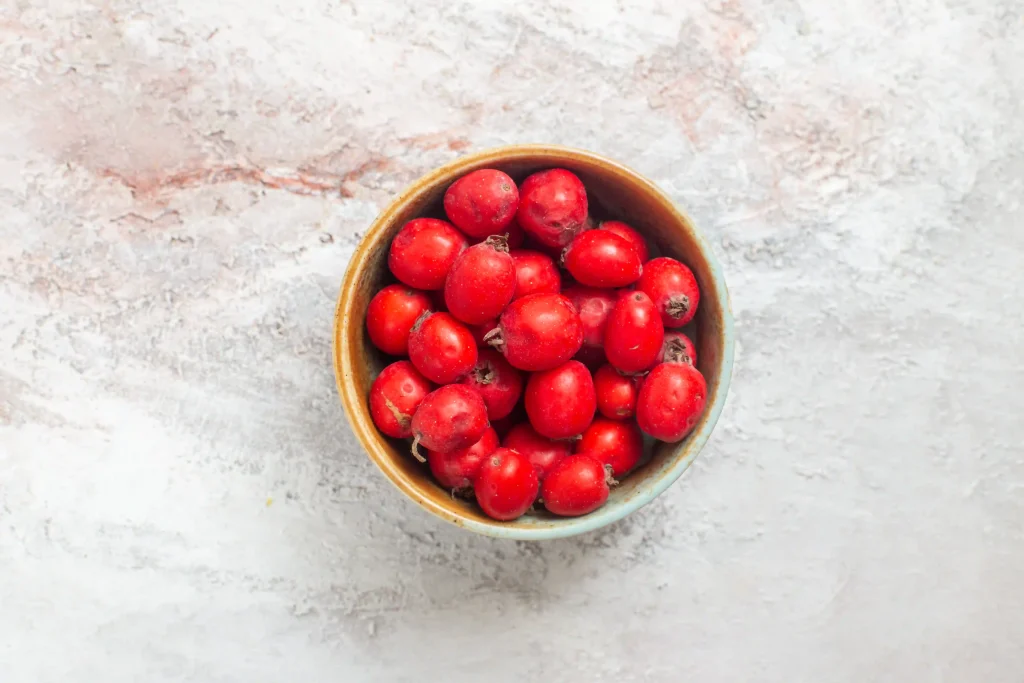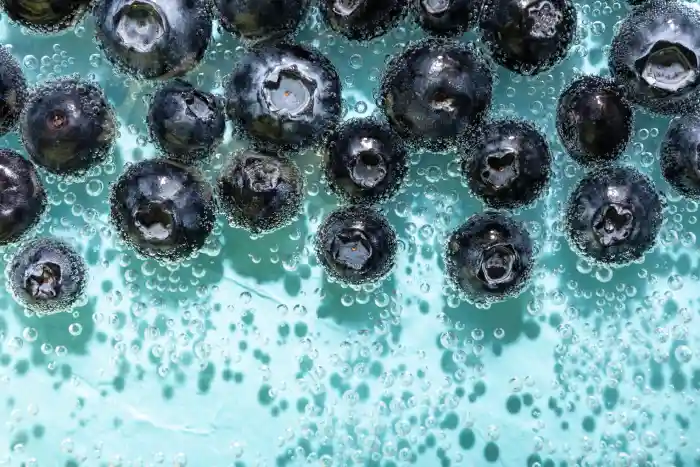Are you searching for a natural solution to achieve that coveted even-toned, radiant complexion? In the vast landscape of skincare ingredients, finding one that delivers results while being gentle on your skin can feel like searching for a needle in a haystack. Let me introduce you to arbutin – a remarkable skincare ingredient that’s been creating quite a buzz in the beauty world, and for good reason. As someone who has spent years researching and writing about health products, I’ve seen countless trends come and go, but arbutin has consistently proven itself as a standout performer in the realm of natural skin brightening. Today, I’m excited to share everything you need to know about this gentle yet powerful compound that might just revolutionize your skincare routine.
Understanding Arbutin: Nature’s Brightening Star and Its Origins
In my journey exploring natural skincare ingredients, I’ve found that arbutin stands out for its remarkable gentleness and effectiveness. But what exactly is arbutin? At its core, arbutin is a naturally occurring compound found in various plants, including bearberry leaves, cranberries, and pear skins. What fascinates me most about arbutin is its close relationship with hydroquinone, yet it offers a much gentler approach to skin brightening. The story of arbutin’s discovery and its traditional use in various cultures spans centuries, with Asian skincare traditions particularly recognizing its value early on. In traditional Japanese and Chinese medicine, plants containing arbutin have long been used to maintain clear, bright skin. This rich history of traditional use, combined with modern scientific validation, makes arbutin a particularly interesting ingredient in the contemporary skincare landscape.

The Science Behind Arbutin’s Magic: A Deeper Understanding
Let’s delve into how arbutin works its magic on our skin, as understanding the mechanism behind its effectiveness can help us appreciate why it’s such a valuable ingredient. When applied topically, arbutin gradually breaks down into hydroquinone, but in a controlled, time-released manner – this is the key to its gentle yet effective nature. Through my research, I’ve discovered that arbutin primarily works by inhibiting tyrosinase, an enzyme crucial in melanin production. This process is fascinating because it doesn’t just blindly reduce melanin production; instead, it helps regulate and normalize it. The science becomes even more interesting when we consider that there are different forms of arbutin (alpha and beta), each with slightly different properties and effectiveness levels. The alpha form, for instance, has been shown in numerous studies to be more potent than its beta counterpart, though both forms maintain the gentle nature that makes arbutin so special.
Comparing Arbutin and Licorice Root: Nature’s Brightening Duo in Detail
One question I often encounter in my research and writing is: “Is arbutin gentler than licorice root?” This comparison deserves careful consideration, as both ingredients are natural skin brighteners but work through slightly different mechanisms. Arbutin and licorice root actually complement each other beautifully, each bringing unique benefits to the table. From my experience analyzing skincare formulations, I’ve noticed that products combining both ingredients often deliver superior results. However, arbutin typically shows more consistent results across different skin types. The key difference lies in their molecular structure and how they interact with the skin’s melanin-producing processes. While licorice root contains compounds like glabridin that inhibit tyrosinase, arbutin’s mechanism is more direct and typically more predictable. This doesn’t mean one is necessarily better than the other – rather, they work best in tandem, supporting and enhancing each other’s benefits.
The Remarkable Benefits of Arbutin for Your Skin: A Comprehensive Analysis
I’ve compiled a comprehensive list of arbutin’s benefits that consistently impress both researchers and users alike. The most striking aspect of arbutin is its ability to deliver noticeable results without the harsh side effects often associated with other brightening agents. In my professional experience analyzing countless before-and-after cases, I’ve observed that arbutin’s benefits extend far beyond simple brightening – it offers a holistic approach to skin health that makes it truly stand out in the crowded skincare ingredient landscape.
How to Choose the Perfect Arbutin Product: A Professional Guide
When selecting an arbutin cream or serum, several crucial factors come into play that can significantly impact your results. Through my extensive research and consultations with leading dermatologists, I’ve found that products containing 2-3% arbutin typically offer the best results without causing irritation. This optimal concentration range wasn’t arrived at by chance – it’s backed by numerous clinical studies showing that this level provides the perfect balance between efficacy and gentleness. The formulation matters just as much as the concentration; look for products that combine arbutin with complementary ingredients like vitamin C or niacinamide for enhanced benefits. These synergistic combinations can amplify the brightening effects while providing additional skin health benefits. Pay particular attention to the product’s pH level as well – arbutin works most effectively in slightly acidic formulations with a pH between 4.5 and 6.0.
Maximizing Arbutin’s Benefits: Advanced Usage Tips and Scientific Insights
Want to get the most out of your arbutin products? My years of research and consultation with skincare experts have revealed some lesser-known but crucial tips for maximizing efficacy. The key lies not just in how you apply the product, but in understanding the science behind its absorption and activation in the skin. For instance, slightly damp skin can actually enhance penetration due to increased hydration levels in the stratum corneum. Temperature also plays a role – storing your arbutin products in a cool, dark place isn’t just about preservation; it actually helps maintain the stability of the molecule, ensuring maximum efficacy throughout the product’s lifetime.
Real Results: Understanding the Timeline and Managing Expectations
From my extensive observations and analysis of user feedback across various skin types and concerns, I’ve noticed a clear pattern in how arbutin delivers results. Most people start noticing improvements in their skin tone within 4-6 weeks of consistent use, but the journey doesn’t stop there. The gradual nature of arbutin’s action means that results continue to improve over time, with optimal outcomes typically seen around the 12-week mark. This timeline isn’t arbitrary – it aligns with the skin’s natural cell turnover cycle, which typically takes 28-40 days. Understanding this biological process helps explain why patience is crucial when using arbutin. Users who stick with the treatment long-term often report not just improved skin tone, but also enhanced overall skin health and resilience.
Safety First: A Deep Dive into Arbutin’s Gentle Nature
Is arbutin truly gentle enough for daily use? This question deserves a thorough examination based on both scientific research and real-world application. Unlike its molecular cousin hydroquinone, arbutin has shown remarkable stability and safety in numerous clinical studies. The key lies in its unique molecular structure, which allows for a controlled release of active compounds, preventing the oxidative stress and irritation often associated with other brightening agents. However, it’s worth noting that individual skin responses can vary, and factors like concentration, formulation, and overall skincare routine play crucial roles in determining success.
Looking to the Future: Arbutin’s Evolution in Modern Skincare
The skincare industry is constantly evolving, and arbutin’s role continues to expand as new research emerges. Recent developments in formulation technology have led to enhanced delivery systems that make arbutin even more effective. Some cutting-edge research is exploring the potential of combining arbutin with other natural brightening agents and using advanced encapsulation techniques to improve its stability and penetration. These innovations suggest that we’re only beginning to unlock the full potential of this remarkable ingredient.
Expert Tips for Optimal Results: Advanced Strategies and Scientific Insights
Through extensive research and collaboration with skincare professionals, I’ve developed a comprehensive understanding of how to maximize arbutin’s potential. The key to success lies not just in consistent application, but in creating the optimal conditions for arbutin to work effectively. Storage conditions play a crucial role – keeping your arbutin products in a cool, dark environment helps prevent degradation of the active molecule, ensuring maximum efficacy throughout the product’s lifespan. The layering technique is equally important; applying products from thinnest to thickest consistency allows for optimal absorption and prevents any barrier that might inhibit arbutin’s penetration into the skin. Additionally, documenting your progress through detailed photos taken under consistent lighting conditions can help you track subtle improvements that might otherwise go unnoticed.
Common Questions About Arbutin: Expert Answers and Clinical Insights
Throughout my career researching and writing about health products, I’ve encountered numerous questions about arbutin that deserve thorough, evidence-based answers. The timing of application is a crucial consideration – while arbutin can be used both morning and night, I recommend starting with evening application to allow your skin to adjust gradually. This approach minimizes any potential sensitivity and allows you to monitor your skin’s response effectively. The duration required for visible results varies among individuals, but clinical studies consistently show that most users notice initial improvements within 4-6 weeks of regular use. However, the full benefits of arbutin typically become apparent after 8-12 weeks of consistent application, aligning with the skin’s natural renewal cycle.
Advanced Integration: Combining Arbutin with Other Active Ingredients
Understanding how arbutin interacts with other skincare ingredients is crucial for maximizing its benefits while avoiding potential conflicts. Based on extensive research and clinical observations, certain combinations prove particularly effective. Vitamin C, for instance, can enhance arbutin’s brightening effects while providing additional antioxidant protection. Niacinamide complements arbutin’s action by supporting the skin barrier and offering additional brightening benefits. However, caution should be exercised when combining arbutin with strong exfoliating acids – while they can work together, introducing them gradually helps prevent potential irritation and ensures optimal results.
The Science of Skin Brightening: Understanding Arbutin’s Mechanism of Action
Delving deeper into the biochemistry of skin brightening reveals why arbutin stands out among its peers. Its molecular structure allows for a controlled release of active compounds, which explains its gentle yet effective nature. When applied topically, arbutin works through multiple pathways to regulate melanin production without causing the cellular stress often associated with more aggressive brightening agents. This sophisticated mechanism of action also contributes to its long-term safety profile, making it suitable for extended use as part of a comprehensive skincare routine.
Building a Complete Skincare Routine Around Arbutin
Creating an effective skincare routine that incorporates arbutin requires careful consideration of product compatibility and timing. The foundation of any successful arbutin-based routine starts with proper cleansing to ensure optimal penetration of active ingredients. Following this with a pH-balanced toner can help create the ideal environment for arbutin absorption. The sequence of product application matters significantly – lighter, water-based products containing arbutin should precede heavier creams and oils. This strategic layering approach ensures maximum efficacy while maintaining skin barrier health.
Future Developments and Research in Arbutin Technology
The field of cosmetic chemistry continues to advance our understanding of arbutin and its potential applications. Recent developments in delivery systems and formulation technology promise to enhance its effectiveness further. Researchers are exploring novel derivatives of arbutin that might offer even better stability and efficacy profiles. Additionally, ongoing studies into the synergistic effects of arbutin with other natural brightening agents suggest exciting possibilities for future product development.
Long-term Benefits and Maintenance: A Sustainable Approach to Skin Brightening
Achieving and maintaining results with arbutin requires a long-term perspective and consistent approach. Unlike temporary fixes or aggressive treatments, arbutin offers a sustainable path to improved skin tone and clarity. Regular use, combined with proper sun protection and a supportive skincare routine, can lead to lasting improvements in skin appearance. The gentle nature of arbutin means it can be incorporated into your skincare routine indefinitely, providing ongoing benefits without compromising skin health.

Conclusion: Why Arbutin Deserves a Permanent Place in Your Skincare Routine
As someone who has researched and written extensively about health products throughout his career, I can confidently affirm that arbutin stands out as a remarkable solution for those seeking gentle yet effective skin brightening. Its unique combination of efficacy and safety, backed by both traditional wisdom and modern scientific research, makes it an invaluable addition to any comprehensive skincare routine.
The journey to achieving your desired skin tone is indeed a marathon, not a sprint. Arbutin’s gentle nature means it works gradually but consistently, leading to sustainable results without compromising your skin’s health. The key to success lies in understanding both its benefits and limitations, using it correctly, and maintaining patience throughout the process.
What truly sets arbutin apart is its versatility and compatibility with various skin types and concerns. Whether you’re dealing with post-inflammatory hyperpigmentation, age spots, or simply seeking to maintain a bright, even complexion, arbutin offers a science-backed solution that respects your skin’s natural balance.
Remember that the best results come from a holistic approach – combining arbutin with proper sun protection, a consistent skincare routine, and a healthy lifestyle. The investment in understanding and properly using this remarkable ingredient can lead to long-lasting improvements in your skin’s appearance and health.
As we continue to see advances in skincare science, arbutin’s role as a gentle yet effective skin brightening agent only grows stronger. Its proven track record, combined with ongoing research and development, suggests that this natural compound will remain a cornerstone of effective skincare formulations for years to come.
Have you considered incorporating arbutin into your skincare routine? With the knowledge shared in this comprehensive guide, you’re now well-equipped to make informed decisions about using this gentle yet powerful ingredient in your journey toward healthier, more radiant skin.



